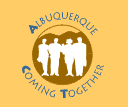Form and Composition of Government
– Albuquerque Tribune, March
6, 2003
Within a year, voters of Albuquerque and Bernalillo County will
vote on a new charter merging city and county governments. The writing
of a new charter presents an opportunity to assess almost thirty
years of experience under the present systems and forge a new form
of government that combines the best attributes of each.
Voters in the city of Albuquerque are familiar with the Mayor/
Council form, which sets up a "separation of powers."
Its major feature is that the legislative body, the City Council,
operates separately from the executive branch administered by an
elected mayor. Voters in the unincorporated areas of Bernalillo
County are familiar with the traditional Commission/Manager or "unified"
form, in which a five-member districted County Commission serves
as the governing body and hires a county manager to perform executive
functions.
History
Prior to 1974, both the city and county had Commission/Manager systems.
Former Mayor David Rusk in a report to the Charter Commission describes
the reform movements of the early 1970's, which led to the city's
full-time mayor directly elected by the voters and a larger districted
city council and county commission. These were much-needed changes.
They provided the leadership of an elected mayor and increased citizens'
sense of direct representation. Yet the systems created in 1974
may again need to evolve to respond to changes that have occurred
since then.
How is it working for us?
City government. Rusk’s report
describes issues that have arisen under the Mayor/Council system.
- The revolving door to the mayor’s office every four years
has created "great instability" and loss of institutional
memory in the executive branch.
- The political impacts of turnover on professional city services
have increased since 1989 when the city charter was amended to
give the Mayor rather than the CAO authority to appoint and fire
department heads.
- In recent years with run-offs ruled unconstitutional, mayors
have lacked breadth of support and true mandate, with the last
two mayors elected by only 9% and 12% of registered voters, respectively.
- Many Albuquerque mayors, frustrated with council involvement
in "executive" matters have called for stronger barriers
and clearer separation of legislative and executive roles.
- Policy-making is divided and policy-making deadlock is a continual
threat.
- Acrimonious conflicts between the mayor and council are a recurring
dynamic. The principle of separation of powers is the foundation
for a conflict pattern of interaction among officials, especially
elected officials, who have incentive to compete with one another
to accomplish their agendas.
- Staff build-ups on both sides over the years waste resources,
duplicate services and fuel competition
.
- Regarding the 9-member districted city council, Rusk describes
"neighborhood-based gridlock" noting that it is increasingly
difficult to gain council approval for new initiatives that would
benefit the city as a whole but face strong local opposition.
Over 300 neighborhood associations have become strong players
in the development process and this affects city-wide planning
and zoning policy and results in costly lawsuits.
According to Tanis Salant of the National Civic League, the "Separation
of Powers form of government was created to prevent bad things from
happening."
County government. Rusk notes the "level
of effectiveness and stability" under the long-term tenure
of the current County Manager and the political power resulting
from its partisan election system. Other issues involve leadership
and representation.
- According to UNM political science professor Timothy Krebs,
a pure Commission/ Manager system without a separately elected
mayor can create a "crisis of leadership" and "stagnation
in policy-making" in dealing with important societal issues.
- Five districts for the entire county may not give enough voice
to communities of interest, as citizens from unincorporated areas
voice dissatisfaction with urbanization and development decisions
that threaten their rural lifestyle.
What kind of government do we want?
For guidance, the Charter Commission has reviewed the literature,
turned to the testimony of national and local experts and listened
to citizen testimony. What has emerged from these discussions is
a proposal for a combination of the two basic forms, in which a
mayor is elected at-large but is also part of the governing body.
Dr. Tanis Salant of the National League of Cities told the Charter
Commission that "Unification of Powers was created to make
good things happen. Strong political leadership can occur under
both forms, but a mayor and council functioning as a cohesive team
is a better form for creating a long-term vision with mutually agreed
upon goals." Making the mayor a co-policy maker on the governing
body can change the dynamics from conflict to cooperation on the
vital activity of making and carrying out community-wide policies.
Other Communities
Within the southwestern region, an overwhelming majority of comparable
communities use this "unified" form of government that
(1) combines executive and legislative branches in a council or
commission and (2) elects a mayor community-wide. Among them are
Austin, Dallas, Fort Worth, Kansas City, Tucson, Phoenix, Oklahoma
City, San Antonio, San Jose, San Diego, and Colorado Springs. Out
of 199 communities with populations numbering 100,000 or more, 112
of them, mostly newer communities in the west, use this form, whereas
older large central cities in the east and mid-west tend to have
the Mayor/ Council system. In addition to Albuquerque, others in
our region with the latter system are El Paso, Tulsa, and Denver.
What kind of leadership do we want?
Inspirational and visionary mayors can emerge under any form, but
they have different leadership styles. The "unified" form
of government vests leadership in the governing body, with the mayor
in a facilitative role. This type of facilitative mayor
works with and through others and is a cohesive influence on the
commission. The mayor is elected community-wide, presides over the
governing body, is a voting member or tie-breaker, and proposes
legislation. Under this system, the governing body, including the
mayor, has the executive power to appoint and remove the CAO or
manager, who in turn appoints department heads and controls the
merit system.
Giving the mayor the power to propose legislation and the power
of "first review" over the budget provides the tools and
powers needed to be a broad community leader. Having a mayor as
part of a new "unified" commission or council would be
a dramatic departure from the current system.
Or should leadership continue to be vested in a strong executive
mayor with a top-down style, who runs a separate executive branch?
Experts caution against creating a "partial-executive"
mayor with both voting and veto power, as this creates ambiguity
in the mayor's role and sets up conflict with the commission and
manager.
We need to choose the type of leader we want and give him or her
the tools to be effective. Regardless of style, direct election
gives any mayor visibility in the community and opportunity to build
a coalition that supports his or her efforts to work as a guiding
force.
Composition and Size of the Commission
Mayor/Council forms of government tend to have larger legislative
bodies; for example, the cities of Chicago and New York have 50
members of the assembly, respectively, with 11-15 being typical
in western Mayor/Council examples. The newer "unified"
Mayor/Commission cities have commissions ranging from 5 to 14 members.
Advantages of a larger number include greater focus on constituent
services and communities of interest and less expensive campaigning,
but smaller districts can lead to too much emphasis on "pot-hole"
politics or parochial district needs. The interest of rural areas
may be ignored by majorities representing the interests of urbanized
areas.
Smaller numbers foster teamwork, functioning more like boards of
directors with an incentive to find common interests and implement
long-term community goals. Consolidating staffs could save resources
and allow more efficient focus on constituent services. These larger
districts would likely require more expensive campaigning.
Some communities in the region have a combination of districted
and at-large seats. Rusk points out that Greater Albuquerque would
be a municipal corporation with a $1 billion a year budget. At-large
members have a broader constituency and a clearer obligation to
weigh the entire community's interests, but may upset the balance
of district representation. A facilitative mayor elected at-large
in a unified government can moderate between service to districts
and service to the community as a whole.
The Charter Commission invites the community to participate in making
these decisions at a public hearing on Friday March 7 from 2 to
5 pm in the Commission Chambers at 1 Civic Plaza.
– Josephine Porter, President, Albuquerque-Bernalillo
County League of Women Voters
– Signe Rich, Executive Director, Shared Vision
|



